Walking along the clifftops in January, I despaired of seeing anything in flower. Many plants are looking burnt by the heat, especially the sturdy bushes of Coast Beard-heath, Leucopogon parviflorus.
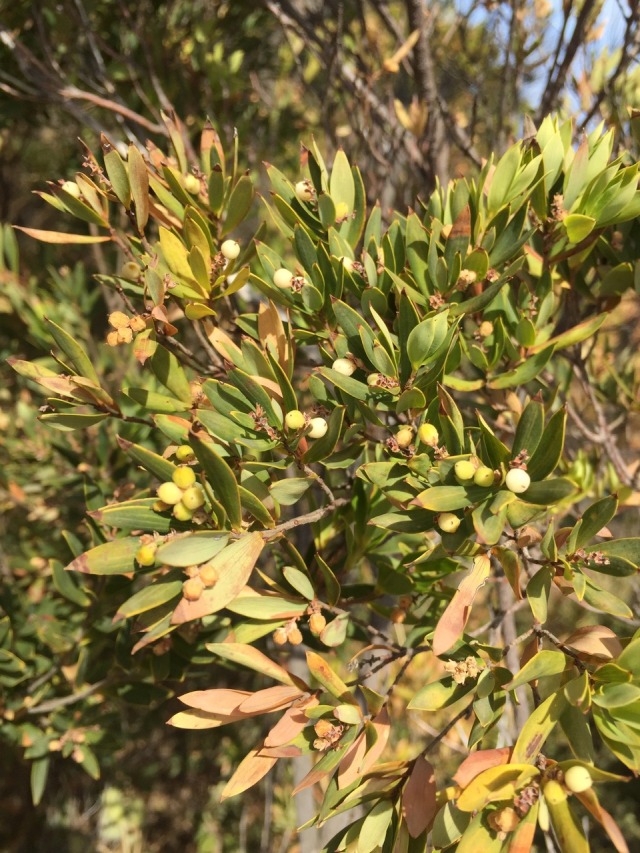 Coast Beard-heath
Coast Beard-heath
However, many of the bushes of this plant are developing their tiny white berries which, though mostly seed, are quite tasty, and enjoyed by birds. The lower-growing bushes of Sea Box, Alyxia buxifolia, are also developing larger red berries.
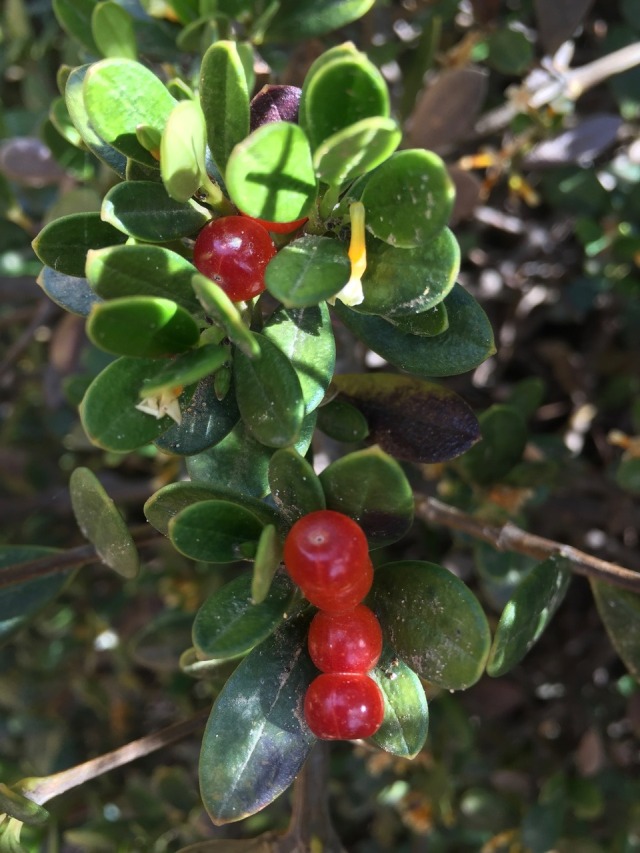 Sea Box
Sea Box
In moist forested areas, such as near Moggs and Distillery Creeks, tiny red berries are also a feature of Prickly Currant-bush, Coprosma quadrifida.
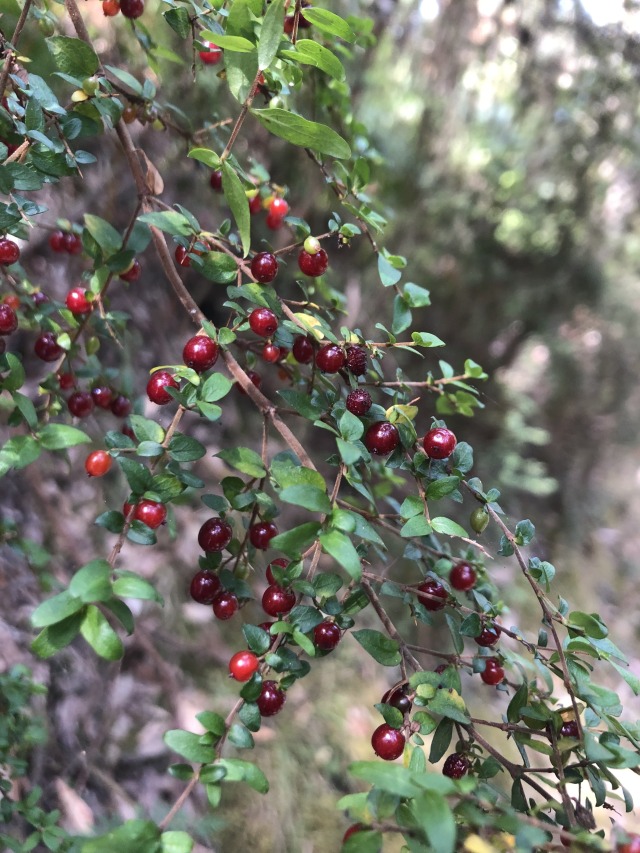 Prickly Currant-bush
Prickly Currant-bush
Beware, as this, like the very similar but taller Sweet Bursaria, Bursaria spinosa, has long, very sharp spines.
In the heathlands there are also many heat-damaged plants, such as the new foliage on young banksias.
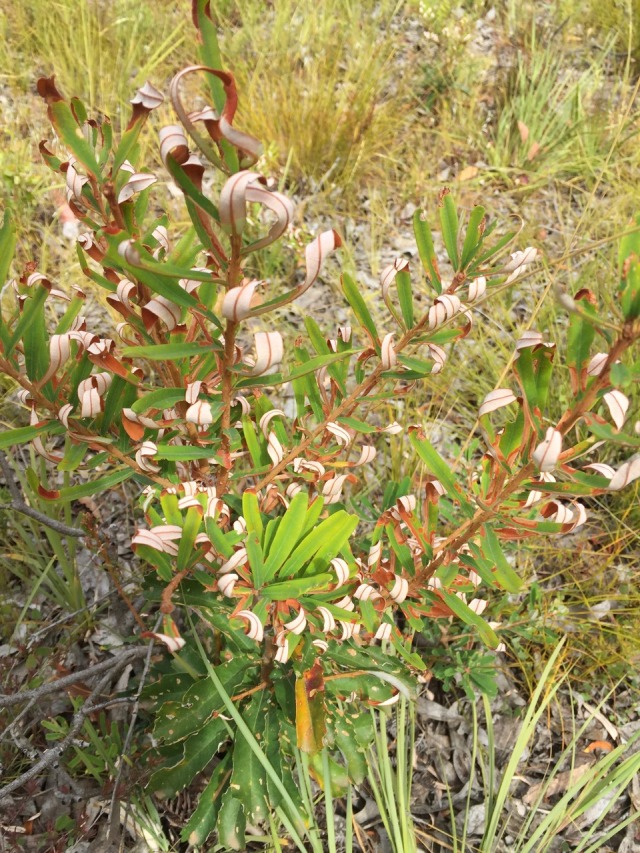 Banksia
Banksia
I have found one plant in flower, also with prickly foliage, Prickly Geebung, Persoonia juniperina. Small tubular yellow flowers, with unusual curled-out petals, are scattered inside its inhospitable foliage.
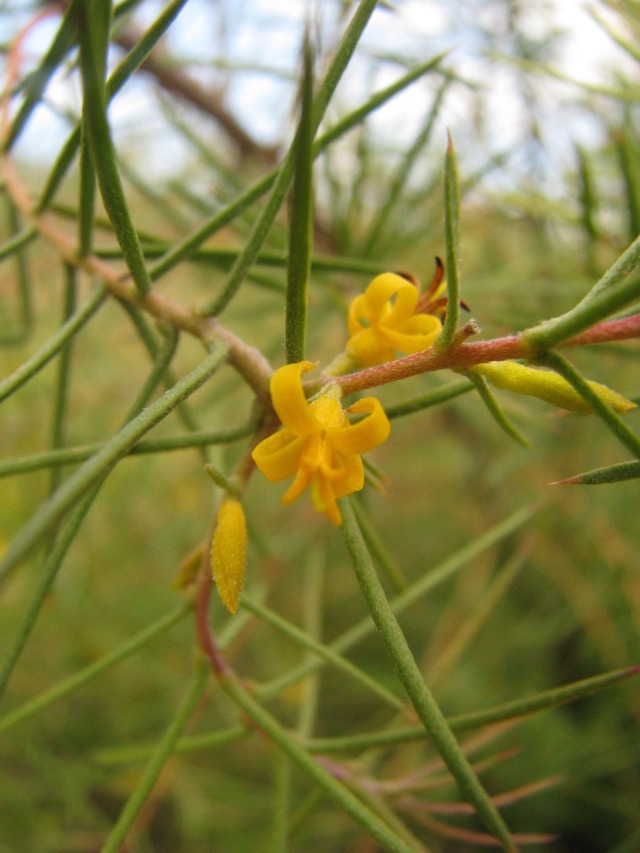 Prickly Geebung
Prickly Geebung
In the Allen Noble Sanctuary there are a few Kangaroo Apples, Solanum sp., with lovely violet flowers and striking smooth oval yellow fruits. I am not sure which of the two possible Kangaroo Apples species these are, but they are plants that are fairly short-lived, and come up in disturbed areas.
 Kangaroo Apple
Kangaroo Apple
I consider sedges and rushes to be a highlight of this month, and there are many types in this sanctuary. This includes a Red-fruit Saw-sedge, Gahnia sieberiana, growing beside the pathway. It has masses of tiny red berries displayed along the dangling brown plume; however, the other plants have passed this stage.
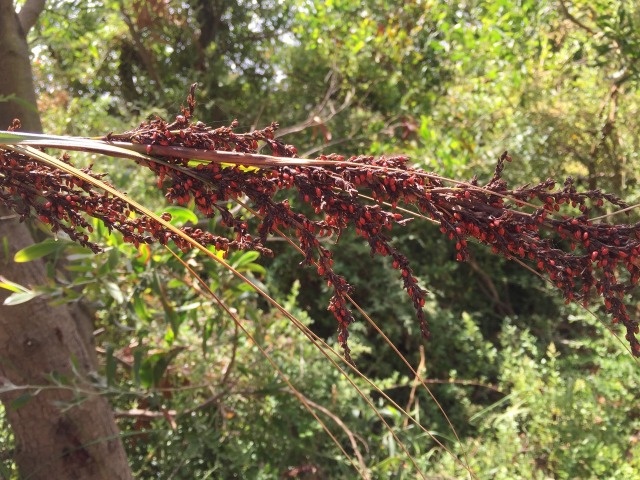 Red-fruit Saw-sedge
Red-fruit Saw-sedge
In our district there are 11 species of Sea Rush, the most common being Juncus kraussii subsp. australiensis.
There is a nice sedge or rush beside the small pool at Distillery Creek picnic ground…I wonder of you can identify it? This is also a hotspot for birds.
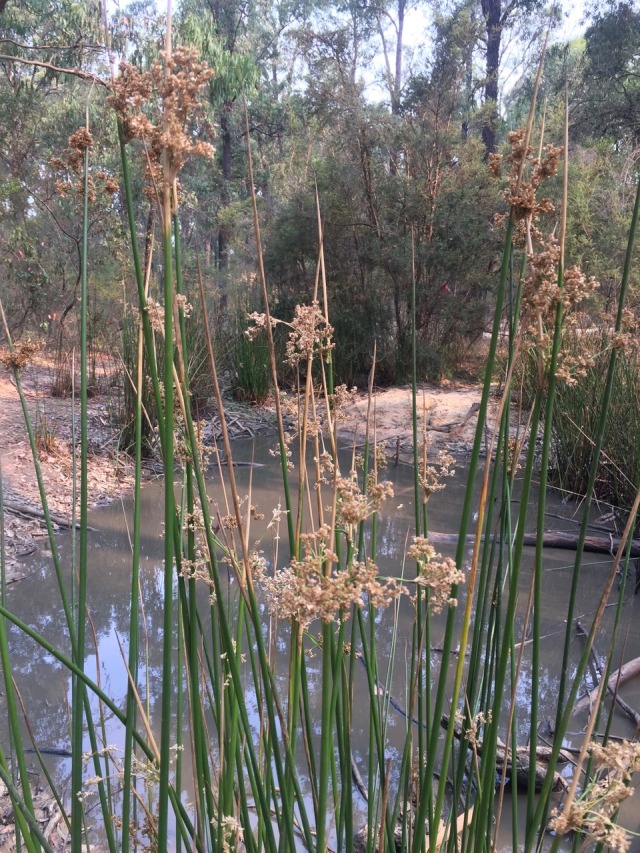 Sedge or Rush
Sedge or Rush
A plant which may be familiar to many is Knobby Club-sedge, Ficina nodosa, as the shire has planted it along roadsides. I have a lovely specimen flowering in my fish pond, each stem with a globular seed-head near, but not at, the tip. It is a really hardy plant growing in a wide range of habitats.
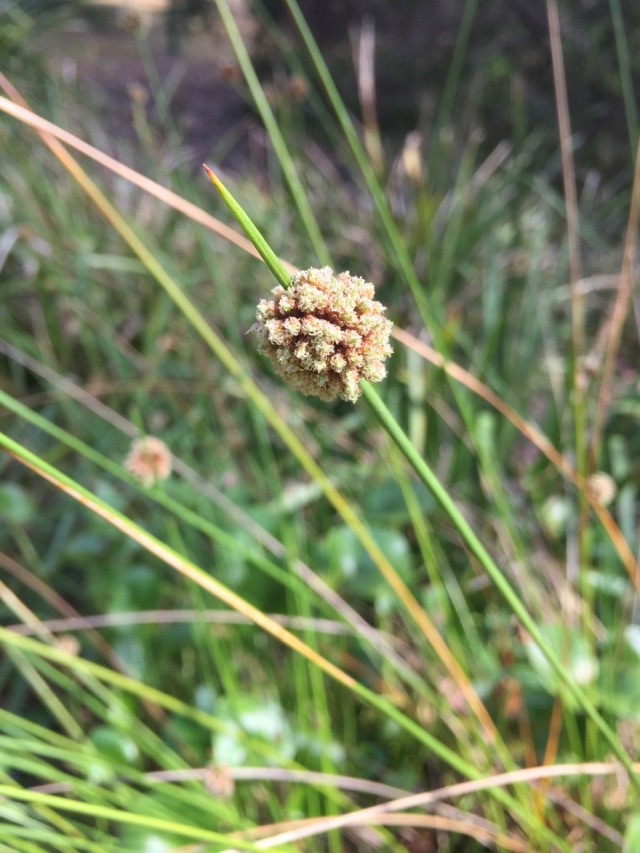 Knobby Club-sedge
Knobby Club-sedge
Perhaps, the ‘creme de la creme’ for this month is to be found near the Anglesea treatment plant. About a dozen plants of Feather-head, Ptilotus macrocephalus, have several spikes of the dancing white plumes standing out just above the other low- growing bushes. They can be found in a small area of bushland, on the right-hand side of the path as it turns away from the plant toward the sea. I have seen them often in drier locations in Victoria and Western Australia, but this is the only place I know of on the Surfcoast… be quick as they will soon be finished.
 Feather-head
Feather-head
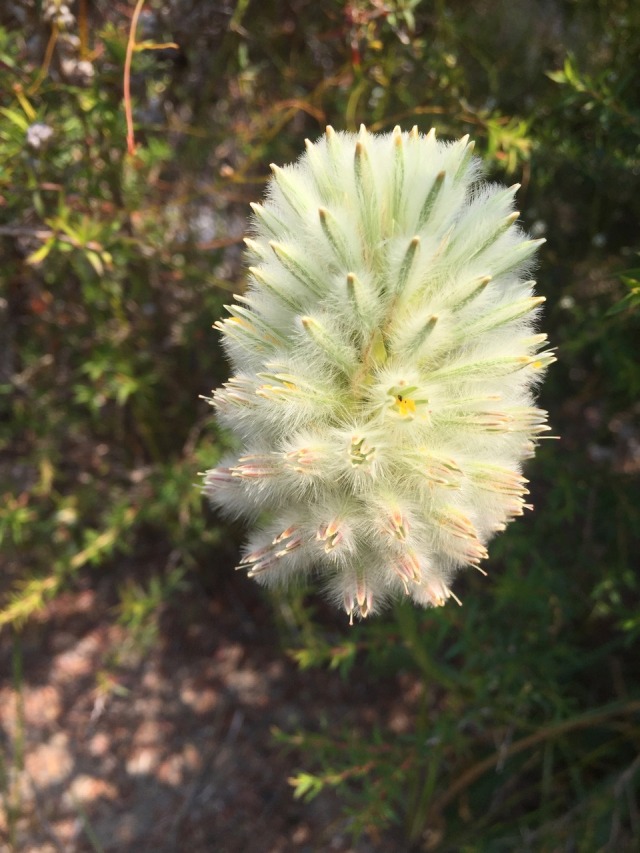 Feather-head flower
Feather-head flower
If you have time while there, look for blue flowers as, skulking in the undergrowth, there are a few remaining examples of the gorgeous, fringed, mauve flowers of Branching Fringe Lily, Thysanotus racemoides (formerly juncifolius), always worth a look.
 Branching Fringe Lily
Branching Fringe Lily
In my garden I have been delighted by the first flowering of a plant I wrote about last time, my potted Magenta Stork’s-bill, Pelargonium rodneyanum. It has a number of quite large, bright magenta flowers, but unfortunately something is eating holes in its big rounded leaves…aaah!
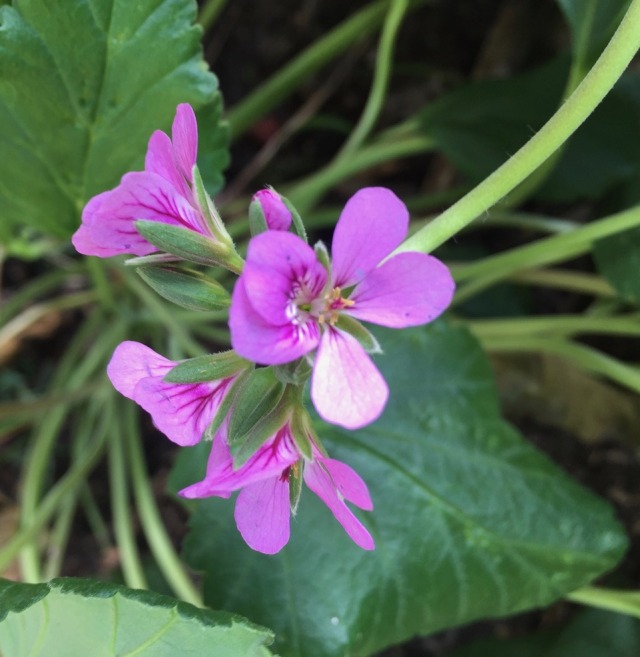 Magenta Stork’s-bill
Magenta Stork’s-bill
I wonder what unexpected treasures you may find in amongst all the dryness.
Ellinor Campbell